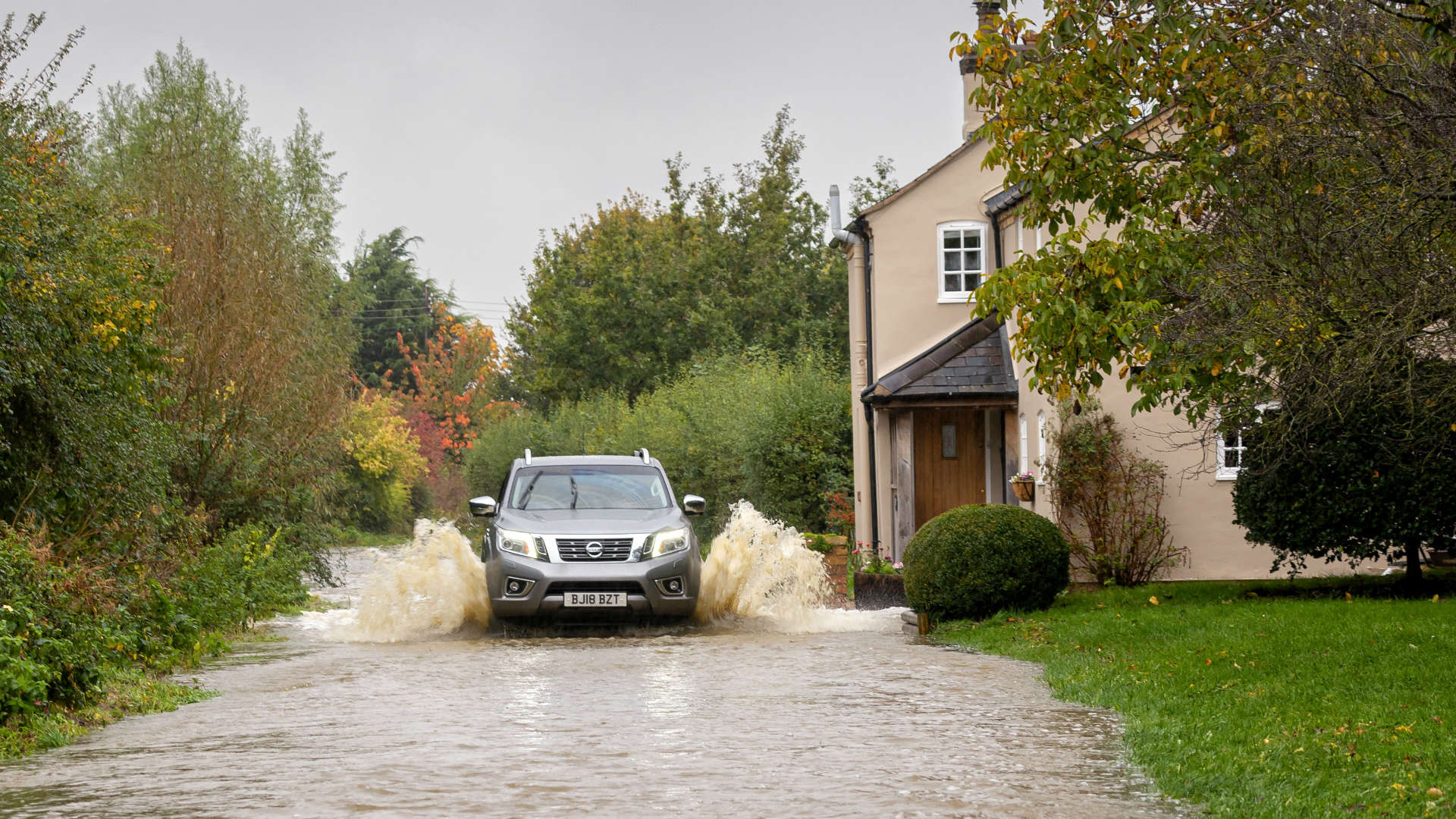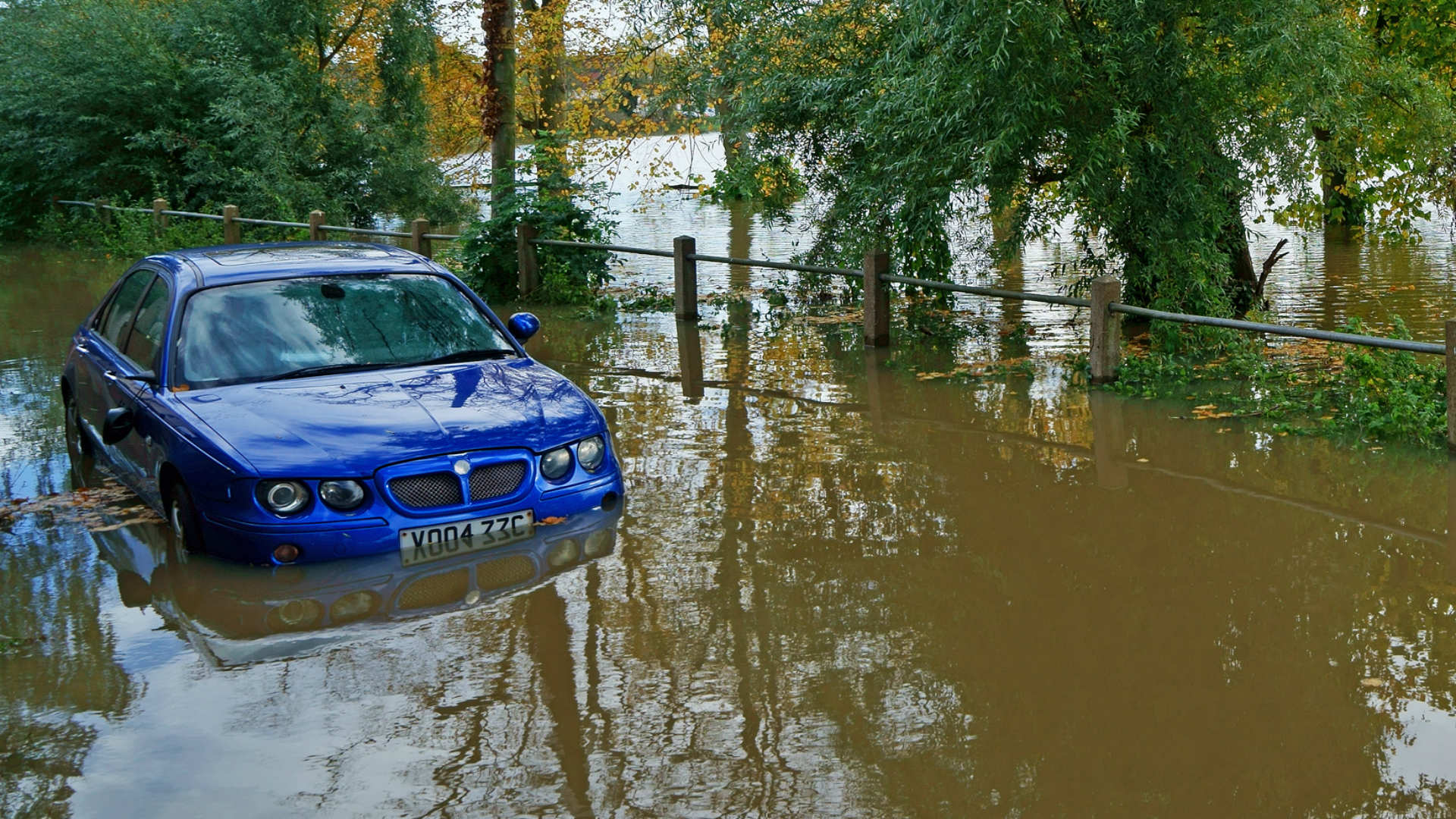
When the Met Office issues a Yellow weather warning for heavy rain it inevitably means driving will be more dangerous – yet around three quarters of drivers say they would risk driving through flood water.
A risk worth taking? Absolutely not. Just 300mm of moving water is enough to float a car, yet research shows many drivers aren’t aware of the danger.
Shockingly, 32 percent of flood-related deaths are in vehicles: the leading cause of death in flooded areas.
A survey carried out by the AA, in partnership with the Environment Agency, found that Leicester was the top place for flood-related car breakdowns in the UK over a four-year period.
The appropriately named Watery Gate Lane played host to 88 flood-related callouts during this time. It headed the list of the top 10 places in Britain for breakdowns due to flood water.
‘Never drive through flood water’

Caroline Douglass of the Environment Agency said: “It is concerning that so many drivers are willing to risk their own life and the lives of others by driving through flood water.
“Our message is clear: surface water flooding it is often deeper than it looks, and just 300mm of flowing water is enough to float your car. Never drive through flood water. Turn around and find another route.”
The AA’s Ben Sheridan added, “Don’t chance it if the road ahead is flooded – flood water can be deceptively deep and can hide other hazards in the road that can leave you stranded.
“Trying to drive through flood water puts you and your passengers at risk, but it can also cause damage to your car. It only takes an egg-cupful of water to wreck your engine and on many cars, the engine’s air intake is low down at the front.”
How to drive through SHALLOW flood water

The message is pretty clear: you should avoid driving through a flood. However, if you decide that the water is shallow enough to drive through, the Driver and Vehicle Standards Agency (DVSA) has the following five tips:
- Allow oncoming traffic to pass before you drive through the flood water
- Drive along the highest part of the road (usually the centre), but look out for approaching drivers who may be doing the same thing
- Go slowly and keep to a steady speed
- Use first gear and keep revs high by slipping the clutch (keep it partly engaged)
- Once you’ve made it through, test your brakes before resuming normal driving
NEVER attempt to drive through fast-moving water such as a flooded bridge or a ford. Conditions can change rapidly, so you may be swept away. Equally, you don’t know if the flood water is hiding debris or a broken road surface.

If your engine cuts out after driving through flood water, don’t attempt to restart it. Instead, call your breakdown provider and wait for help.
The AA lists these facts about flood water. They are worth considering before you attempt to drive through a flood.
- Most drowning deaths happen within three metres of a safe point
- Two-thirds of people who die in flood-related incidents are good swimmers
- Just 150mm of fast-flowing water can knock you off your feet
- If the speed of the water doubles, the force it exerts on you and your car goes up four times
- Flood water can carry diseases
Listen to local traffic and weather reports, and use social media to receive an early warning of roads blocked by flood water. It’s better to plan ahead than it is to react to sudden changes in conditions.
ALSO READ:
How to drive safely in heavy rain
Why driving through puddles could mean a fine or penalty points
10 tips for safer driving this winter
The post How to drive through flood water safely appeared first on Motoring Research.


